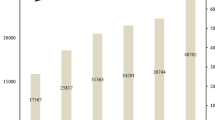Abstract
Objective To evaluate pharmaceutical interventions by ward-based clinical pharmacists in Germany. Setting Two ward-based clinical pharmacists working at the Departments of Stem Cell Transplantation and Intensive Care Medicine. Methods Pharmaceutical interventions during ward rounds from December 1st 2006 to November 30th 2008 were recorded and classified according to our own system that was adopted from established classification systems. Main outcome measure Classification of (1) cause of intervention, (2) intervention, (3) outcome of intervention and (4) initiator of intervention. Results Altogether 2,312 interventions were documented. Besides 520 cases of information about drugs (rational selection, occurrence of infrequent adverse events or interactions), the main interventions were recommendations for the addition, the withdrawal or the replacement of a drug (n = 907, 50.6%) and advices for the change of dosage, dosing intervals or dose adjustment according to impaired renal or liver function (n = 584, 32.6%). The vast majority of the suggested interventions (92.8%) have been accepted. Conclusion The participation of a clinical pharmacist during ward rounds contributes to the optimisation of pharmacotherapy, in terms of choosing the most appropriate drug and/or the suitable dosage and may improve patient care.




Similar content being viewed by others
References
Surugue J, Vulto AG. Workforce of EU hospitals and pharmacy services: a direct patient safety issue. EJHP Pract. 2006;12:31–3.
Kaboli PJ, Hoth AB, McClimon BJ, Schnipper JL. Clinical pharmacists and inpatient medical care: a systematic review. Arch Intern Med. 2006;166:955–64.
Viktil KK, Blix HS. The impact of clinical pharmacists on drug-related problems and clinical outcomes. Basic Clin Pharmacol Toxicol. 2008;102:275–80.
Kucukarslan SN, Peters M, Mlynarek M, Nafziger DA. Pharmacists on rounding teams reduce preventable adverse drug events in hospital general medicine units. Arch Intern Med. 2003;163:2014–8.
Leape LL, Cullen DJ, Clapp MD, et al. Pharmacist participation on physician rounds and adverse drug events in the intensive care unit. JAMA. 1999;282:267–70.
Bond CA, Raehl CL. Clinical pharmacy services, pharmacy staffing, and adverse drug reactions in United States hospitals. Pharmacotherapy. 2006;26:735–47.
Bond CA, Raehl CL. Clinical pharmacy services, pharmacy staffing, and hospital mortality rates. Pharmacotherapy. 2007;27:481–93.
Phansalkar S, Hoffman JM, Nebeker JR, Hurdle JF. Pharmacists versus nonpharmacists in adverse drug event detection: a meta-analysis and systematic review. Am J Health Syst Pharm. 2007;64:842–9.
Tonna AP, Stewart D, West B, Gould I, McCaig D. Antimicrobial optimisation in secondary care: the pharmacist as part of a multidisciplinary antimicrobial programme—a literature review. Int J Antimicrob Agents. 2008;31:511–7.
Heyde C, Rutsch A, Eschke D. Clinical pharmacists increase the safety of drug therapy at the time of admission. Krankenhauspharmazie. 2009;30:215–7.
Walk SU, Fritz S, Pruszydlo MG, Hartwig W, Haefeli WE, Hoppe-Tichy T. Pharmaceutical counselling of drug switches at the interface between primary and tertiary care. Krankenhauspharmazie. 2009;30:218–21.
Frey OR. Therapeutic drug monitoring. Krankenhauspharmazie. 2009;30:222–4.
Hartmann A, Eberhardt T, Brüggmann J. Dose individualization in patients with renal insufficiency. Krankenhauspharmazie. 2009;30:225–9.
Krämer I. Pharmacist-conducted patient education and compliance enhancement in specific patient groups. Krankenhauspharmazie. 2009;30:230–5.
Sattler A. Pharmaceutical care with SOAP-notes. Krankenhauspharmazie. 2009;30:239–41.
Probst W. Benefit of pharmaceutical care in patients feeded via enteral tube. Krankenhauspharmazie. 2009;30:248–50.
Neubauer W, Hug MJ, Bertz H, Strehl E, Engelhardt M. The role of the pharmacist in the development of clinical guidelines. Krankenhauspharmazie. 2009;30:255–8.
Rudis MI, Brandl KM. Position paper on critical care pharmacy services. Society of Critical Care Medicine and American College of Clinical Pharmacy Task Force on Critical Care Pharmacy Services. Crit Care Med. 2000;28:3746–50.
Langebrake C, Hilgarth H. Clinical pharmacy at the University Medical Centre Hamburg-Eppendorf. Krankenhauspharmazie. 2008;29:83–9.
Pharmaceutical Care Network Europe. PCNE classification for drug-related problems V5.01. 2008. http://www.pcne.org/. Accessed 30 Jul 2008.
Schaefer M. Discussing basic principles for a coding system of drug-related problems: the case of PI-Doc. Pharm World Sci. 2002;24:120–7.
Krahenbuhl-Melcher A, Schlienger R, Lampert M, Haschke M, Drewe J, Krahenbuhl S. Drug-related problems in hospitals: a review of the recent literature. Drug Saf. 2007;30:379–407.
Schneeweiss S, Hasford J, Gottler M, Hoffmann A, Riethling AK, Avorn J. Admissions caused by adverse drug events to internal medicine and emergency departments in hospitals: a longitudinal population-based study. Eur J Clin Pharmacol. 2002;58:285–91.
Koshman SL, Charrois TL, Simpson SH, McAlister FA, Tsuyuki RT. Pharmacist care of patients with heart failure: a systematic review of randomized trials. Arch Intern Med. 2008;168:687–94.
Falconnier AD, Haefeli WE, Schoenenberger RA, Surber C, Martin-Facklam M. Drug dosage in patients with renal failure optimized by immediate concurrent feedback. J Gen Intern Med. 2001;16:369–75.
Bond CA, Raehl CL. Clinical and economic outcomes of pharmacist-managed antimicrobial prophylaxis in surgical patients. Am J Health Syst Pharm. 2007;64:1935–42.
Klopfer JD, Einarson TR. Acceptance of pharmacists’ suggestions by prescribers: a literature review. Hosp Pharm. 1990;25:830–6.
Schumock GT, Butler MG, Meek PD, Vermeulen LC, Arondekar BV, Bauman JL. Evidence of the economic benefit of clinical pharmacy services: 1996–2000. Pharmacotherapy. 2003;23:113–32.
Bond CA, Raehl CL, Franke T. Clinical pharmacy services, hospital pharmacy staffing, and medication errors in United States hospitals. Pharmacotherapy. 2002;22:134–47.
Kane SL, Weber RJ, Dasta JF. The impact of critical care pharmacists on enhancing patient outcomes. Intensive Care Med. 2003;29:691–8.
Kopp BJ, Mrsan M, Erstad BL, Duby JJ. Cost implications of and potential adverse events prevented by interventions of a critical care pharmacist. Am J Health Syst Pharm. 2007;64:2483–7.
Kantelhardt P, Langebrake C. DokuPIK—a new database for the documentation of medication errors and pharmaceutical interventions (part I medication errors). Krankenhauspharmazie. 2009;30:63–8.
Langebrake C, Kantelhardt P. DokuPIK—a new database for the documentation of medication errors and pharmaceutical interventions (part II interventions). Krankenhauspharmazie. 2009;30:149–55.
Acknowledgments
We want to thank Prof. Dr. med. Georg Kreymann, Prof. Dr. med. Axel R. Zander and Dr. Michael Baehr, who initiated the project “Clinical Pharmacists” at our hospital for the fruitful cooperation at all times.
Funding
There was no external funding obtained for this work.
Conflicts of interest
There are no conflicts of interest to be stated.
Author information
Authors and Affiliations
Corresponding author
Rights and permissions
About this article
Cite this article
Langebrake, C., Hilgarth, H. Clinical pharmacists’ interventions in a German University Hospital. Pharm World Sci 32, 194–199 (2010). https://doi.org/10.1007/s11096-010-9367-z
Received:
Accepted:
Published:
Issue Date:
DOI: https://doi.org/10.1007/s11096-010-9367-z




